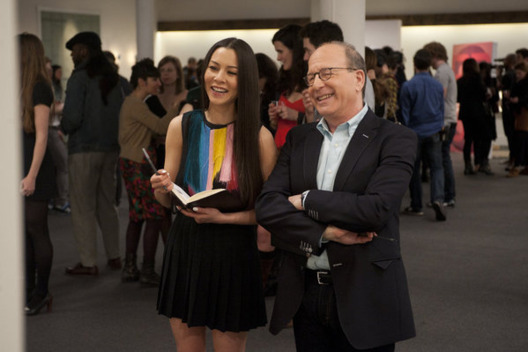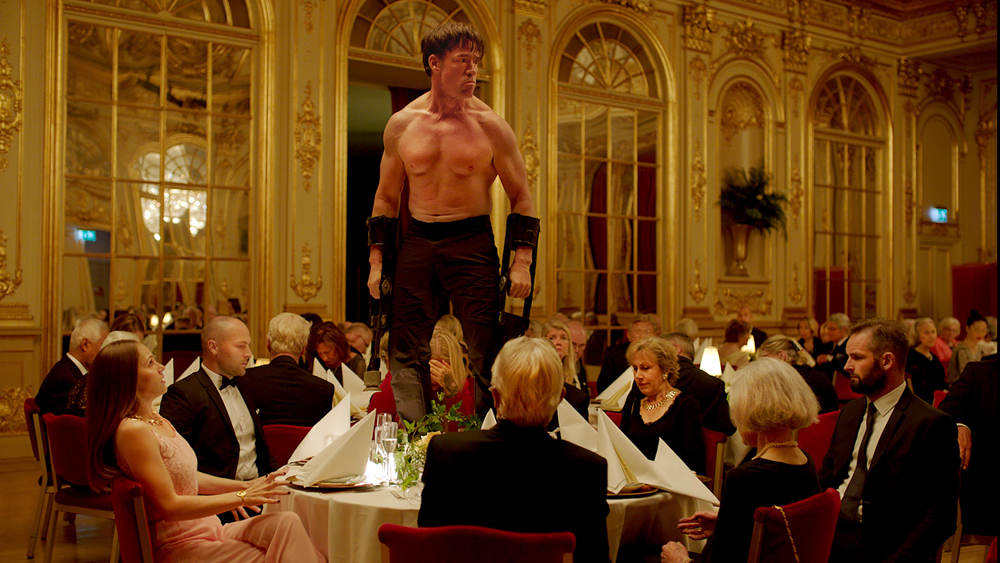
Our new column “Theory Decoded” looks at art theory and aesthetics across a spectrum ranging from the ancient to the contemporary, and from the well-known to the obscure and overlooked. Each column decodes a particular theory or theorist in contemporary terms, using as little headache-inducing jargon as possible.
If your first response to an artwork has ever been to drag your friend over to see it too, or to snap a photo and post it on Instagram, congratulations: you’ve been experiencing art according to a key aspect of Kantian aesthetics.
In terms of art, Immanuel Kant (German, 1724-1804) is known primarily for his 1790 book Critique of Judgment—aka, “Kant’s third critique,” following his Critique of Pure Reason (1781) and Critique of Practical Reason (1788). Though his Critique of Judgment established many of the ways we describe aesthetics, write criticism, and respond to art in Western culture to this day, Kant is frequently dismissed as too stuffy and old-fashioned to be worthy of attention. While it’s true that his focus on beauty and taste can seem quaint or out of touch with the concerns of the contemporary art world, his broad-strokes approach to aesthetics is in many ways more relevant today than ever.
Consider the aforementioned urge to share the experience of an artwork with another. What could be more contemporary in an era of pervasive social media than an impulse to share ideas and images? This compulsion is more important than it might seem, however, and is for Kant a fundamental feature that designates whether something is a work of art or not. Whether sharing earbuds to play a newly discovered song or pulling a friend across a gallery to see an artwork, art creates a desire to bring others into the fold, to have a mutual experience. While this might sound a bit hokey, according to Kant, this art-initiated drive is based on an assumed universality, on a belief that if something really blows your mind it will blow the minds of others too.

Of course, assuming universal agreement for anything is always an iffy proposition, and Kant builds on this fact to articulate his theory of what appears as art versus not-art. Let’s say that you drag your friend over and reveal the amazing Artwork X to great fanfare. Your friend, alas, finds the work to be only so-so, and not that great at all. The odds that you’ll just shrug your shoulders and move along without further comment is likely pretty small. Instead, in my experience at least, the response is typically one of disbelief: “Are you serious? How do you not find this amazing?” This might be followed by an attempt to convince your friend of the artwork’s greatness by pointing out all the things that make Artwork X so fantastic—an effort that rarely works.
On the other hand, if during lunch you offer your friend a sandwich made with rye bread, but your friend does not like rye bread, the disagreement typically goes no further. There’s no urge to ask in disbelief why they dislike it, and no attempt to talk them into its many great features. This kind of difference of opinion, unlike differences about art, barely registers, and the conversation moves along elsewhere. This is because, considered in Kantian terms, something like rye bread (or most other things experienced in everyday life) does not trigger further consideration or contemplation in the same way art does. We might or might not enjoy the bread in the moment, but otherwise do not give it much focused thought beyond that.
These types of experience take place at a level Kant calls the agreeable. Whether a great meal, the pleasure of using a well-crafted tool, or the look of sunlight shimmering on a lake, such experiences and appreciations can be intense in their moment but are also fleeting. They typically do not instigate a high degree of in-depth contemplation after the fact. The sunlight on a lake can be nice to look at, and a meal can be enjoyable, but these usually don’t inspire much further discussion, debate, or analysis.
Art, on the other hand, goes beyond the agreeable to the aesthetic, and can incite a degree of passion or experiential richness that prompts discussion, debate, and an intense desire to share or proselytize. Here we reach an area where Kant’s ideas get a bit tricky. Despite its everyday usage, the word “aesthetic” means more than merely the look or qualities of something, whether scrappy, streamlined, beautiful, and so on; it means the subjective experience of those qualities. To be more precise, an aesthetic experience for Kant is the experience of experiencing. To have an aesthetic experience is to encounter something compelling enough to elicit sustained attention, while at the same time resisting resolution into stable understanding or fixed meaning. Lacking a specific end-point or determinate conclusion, our attention has little to latch onto, and becomes less about a perception than about the open-ended activity of perceiving.

When do we regularly have such open-ended experiences that resist settling into defined conclusions? When we look at art, of course. When I look at a chair or a snow shovel I know what these things mean and what they do. They each have a defined purpose, and once I know that purpose I can generally interact with them on auto-pilot. I don’t stand and contemplate the chair or shovel, I just walk over and sit, or I go outside and shovel the snow. On the other hand, when I look at a painting of a chair—or if the snow shovel is a readymade by Marcel Duchamp—I don’t quite know what they are for, what the intent is, or what these things do. I cannot quite resolve them no matter how long I look, consider, or contemplate.
This irresolvable quality is why looking at something like a Cézanne painting of apples just plain feels so different from looking at a grocery store poster about the price of apples: the poster has an easily explained purpose and definite meaning into which our thoughts can settle, the painting does not. It’s the mystery that lingers, as the saying goes, and this degree of mystery, however subliminal, draws us to revisit the same artworks over and over, while we rarely (if ever) feel the urge to return and gaze again at the grocery store poster. Moreover, this type of aesthetic response applies across the range of creative endeavors: we might reread a novel or listen to a song multiple times, while feeling no need to read an instruction manual or listen to an announcement more than once.
Describing these open and indeterminate qualities of art returns us to where we started, to an urge for sharing aesthetic experience with others that is coupled with disbelief when our opinions of that experience do not match. These strands tie together for Kant because if something is only interesting to me personally for a specific, purposive reason—is this rye bread filling, or is this the best chair for my living room? — it’s fair to assume that this personal and purposive interest won’t necessarily apply to others. However, if I appreciate something with no expectation of its fulfilling a particular goal or specifically defined purpose, and only enjoy it purely on its own terms with no vested, personal interest, then I might reasonably assume others will share my appreciation. That this implicit universality of experience rarely holds up in real life is one of the things that keeps the art world interesting, creating a sustained tension between the personal and the universal that prompts dialogue, discussion, and interpretative debate.




